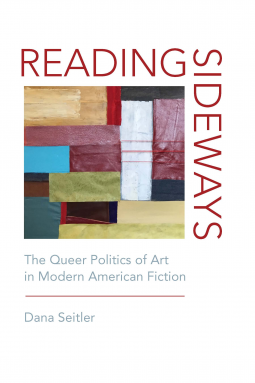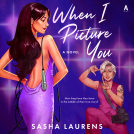
Reading Sideways
The Queer Politics of Art in Modern American Fiction
by Dana Seitler
This title was previously available on NetGalley and is now archived.
Send NetGalley books directly to your Kindle or Kindle app
1
To read on a Kindle or Kindle app, please add kindle@netgalley.com as an approved email address to receive files in your Amazon account. Click here for step-by-step instructions.
2
Also find your Kindle email address within your Amazon account, and enter it here.
Pub Date Jul 02 2019 | Archive Date Jun 30 2019
Talking about this book? Use #ReadingSideways #NetGalley. More hashtag tips!
Description
Reading Sideways explores the pivotal role that various art forms played in American literary fiction in direct relation to the politics of gender and sexuality in works of modern American literature. It tracks the crosswise circulation of aesthetic ideas in fiction and argues that at stake in the aesthetic turn of these works was not only the theorization of aesthetic experience but also an engagement with political arguments and debates about available modes of sociability and sexual expression. To track these engagements, its author, Dana Seitler, performs a method she calls “lateral reading,” a mode of interpretation that moves horizontally through various historical entanglements and across the fields of the arts to make sense of—and see in a new light—their connections, challenges, and productive frictions.
Each chapter takes a different art form as its object: sculpture, portraiture, homecraft, and opera. These art forms appear in some of the major works of literature of the period central to negotiations of gender, race, and sexuality, including those by Henry James, Davis, Willa Cather, Du Bois, Sarah Orne Jewett, and Mary Wilkins Freeman. But the literary texts that each chapter of this book takes as its motivation not only include a specific art form or object as central to its politics, they also build an alternative aesthetic vocabulary through which they seek to alter, challenge, or participate in the making of social and sexual life. By cultivating a counter-aesthetics of the unfinished, the uncertain, the small, the low, and the allusive, these fictions recognize other ways of knowing and being than those oriented toward reductively gendered accounts of beauty, classed imperatives established by the norms of taste, or apolitical treatises of sexual disinterestedness. And within them—and through “reading sideways”—we can witness the coming-into-legibility of a set of diffuse practices that provide a pivot point for engaging the political methods of minoritized subjects at the turn of the twentieth century.
Advance Praise
"Reading Sideways teaches us how to read dialogues between art objects and artistic fields in ways that remind us of why the humanities matter: because the friction between artistic media and our encounters with art estranges what we think we know about ourselves and our attachments. Radiantly written, it is itself both a powerful theory of aesthetics and an aesthetic object worth our deep engagement."--Elizabeth Freeman, University of California, Davis
"Thinking sideways with Dana Seitler is immensely satisfying. Her creative spread of historical contexts exquisitely matches her layered readings, making bent forms of gendered sexuality newly thinkable. Deep intellectual pleasure results from how art matters for politics here. I savored this ride at every turn."--Kathryn Bond Stockton, The University of Utah
Available Editions
| EDITION | Other Format |
| ISBN | 9780823282616 |
| PRICE | $39.00 (USD) |
| PAGES | 208 |
Links
Average rating from 5 members
Featured Reviews
 Cardyn B, Media/Journalist
Cardyn B, Media/Journalist
Dana Seitler invites readers of Reading Sideways to engage in dynamic conversation about the scope and depth of intersectionality in the late 19th and early 20th centuries. In the subtitle, “queer” is applied in its broadest definition of differing in some odd way from what is usual or normal [Webster’s Dictionary] including, but not limited to, sexual orientation. The author sets up the focus of this text early in the introduction by describing the intersection of gender, sexuality, and ethnicity as directly influencing art forms in American literary fiction leading into the 20th century.
Each of the four substantial chapters is also summarized with a paragraph or two to provide an accurate overview of this ambitious study about art that demands conscious participation from its viewers and readers. Page 2 outlines the author’s methodology: “To track these practices, I enact an interpretive method that I call ‘lateral reading’ or reading sideways, a mode of interpretation that moves horizontally through various historical entanglements…” The shaping of the author’s approach continues on page 7:
…I am suggesting that the late nineteenth and early twentieth century designates [sic] a moment in history, though not the only one, in which we can see the transformation of the question of the aesthetic in relation to political and social practice.
A survey of literary theory using pivotal works of the fin de siècle period begins. Specific fiction authors and titles are exhaustively examined through isolated elements and themes relative to sociopolitical contexts in geography, social class, gender, age, ethnicity, and relationship status. The tone of genuine curiosity and thinking aloud makes the academically dense and intellectually engaging content accessible for the general public. Reading Sideways drills as deep as it spans wide while also presenting concepts of art in various forms as the Russian nesting dolls of human expression.
The author uses the deconstruction of context, voice, and point of view to parse recognition of current social imperatives while critiquing and reimagining them. Each chapter applies a different angle of approach to ask how the status quo shifts and evolves to include and exclude individuals and communities. Recurring themes of personhood generate friction against the limitations of the English literary canon. Aesthetic philosophy, social ideology, political implications, and literary theory overlap and diverge supported by plentiful quotes and notations.
“…over the course of this book, we have witnessed the emergence , in Chapter 1, of an aesthetics of the interrogative, the subjunctive, and the unfinished; in Chapter 2, an aesthetics of the small and the low; in Chapter 3, of doubt; and finally, in Chapter 4, of allusion.” [page 160]
Reading a few pages at a time over several days or weeks may offer the most enjoyable way to digest this cerebrally layered content. Illustrations, end notes, and an index provide a treasure trove of intellectual gems worthy of further study.
"What I intend to demonstrate is how writers drew on even the most ossified of aesthetic notions as a means of re-imagining the limits of their social conditions."
Thoroughly researched book with a lot of poignant reflections on art in relation to the contemporary politics of gender and sexuality.
I thought this brought a creative and interesting way to reread works of literature with a different algorithm in mind. We almost always approach novels with our own perspectives and do not venture beyond that to either, what the author was actually trying to convey, or experiencing at the time of the writing or how someone with a different set of life experiences might read the same work. I think the approach of "reading sideways" as a methodology to apply to works of literature and art at the similar time is a fascinating approach. While this book specifically does not speak to me and my type of work, I will certainly take forward these ideas and appreciate this academic process. I think the author will have continued success with this in the future.
#ReadingSideways #NetGalley
Readers who liked this book also liked:
Jakub Politzer (Illustrator), Christina Dumalasova (adapter), Katerina Horakova (adapter)
Comics, Graphic Novels, Manga, General Fiction (Adult)








